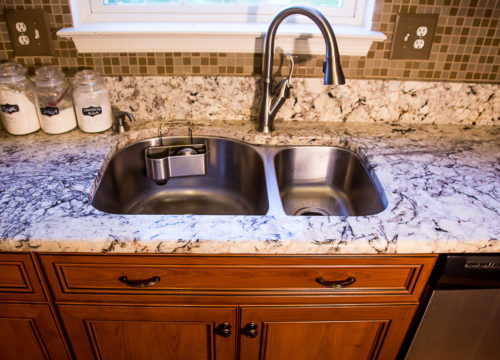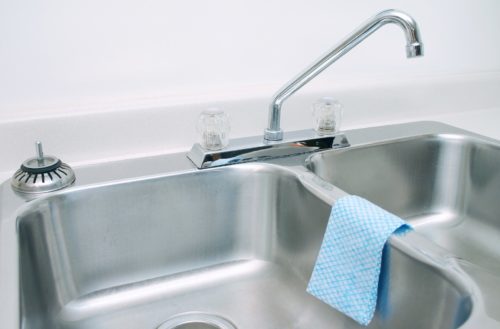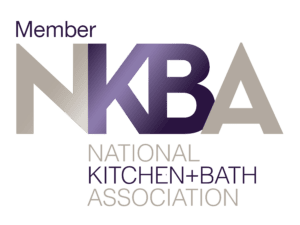Choosing an Overmount or Undermount Sink
October 23, 2018There are many aspects of a kitchen sink to consider, such as size, depth, dividers, and materials. Deciding whether you are looking for an over or undermount sink is best decided first, as it will simplify your decisions down the road. Your countertop material will be a key factor in this decision.
While undermount sinks are currently preferred for looks, overmount can be a better investment in longevity for certain countertop materials like wood. Undermount sinks, currently loved for their smooth look and how they complement stone and solid surface countertops, also get an extra inch or so of depth out of their lower mounting point.
Undermount Sinks
Undermount sinks have that name because they sit under the counter, so that the the edge of the sink is below the level of the countertop. There are three types of undermount sink installation.
- Positive reveal- counter stops before the edge of the sink creating a ledge
- Negative reveal- counter overhangs the sink a little
- Flush- counter and sink edges are aligned
Undermount sinks have their advantages and drawbacks. Examine the pros and cons to decide if one is right for your kitchen.

Pros:
- ~ Creates attractive, clean lines in your kitchen
- ~ Gives you slightly more counter space
- ~ Easy to wipe food and liquid messes directly into the sink
- ~ Undermount sinks can be deeper for cleaning large pots and pans
Cons:
- ~ Usually more expensive
- ~ Professional installation recommended
- ~ Risk of chipping the counter edge when moving heavy dishes
- ~ Water can get into gap between the sink and the counter, if not perfectly sealed. Top craftsmanship is advised.
- ~ Best used with waterproof, non-porous countertops like granite and other types of stone, or a water-resistant composite.
Undermount sinks are not appropriate for counters that are not water-tight, such as wood. Solid surface countertops are recommended for undermount sinks, since some countertop materials may not be strong enough to support the weight of the undermount sink. Talk to your contractor to be sure that the materials and sealing techniques that they use are suitable for an undermount sink.
Overmount sinks
Also called top-mount or drop-in sinks, overmount sinks have a lip that sits above, and covers a small area of, the countertop. They also have both pros and cons.

Pros:
- ~ Appropriately called drop-in sinks, overmount sinks are easier for DIY installation.
- ~ Generally more affordable, even with pro installation.
- ~ Appropriate for porous countertops or countertops that are not solid and need protection, such as butcher block counters
Cons:
- ~ The raised lip of the sink interrupts the level surface of the countertop
- ~ Can collect crumbs and water around the edges, which can result in mold.
Overmount sinks are appropriate for any material countertop, as the the lip of the sink covers the countertop edge entirely, preventing any moisture from reaching the counter material.
Whether an overmount or undermount sink is right for your kitchen depends on your budget, preferences, desire to do it yourself, and countertop material. Whichever choice you make, Kitchen Saver is here to help you through the process and create the perfect kitchen for you.







